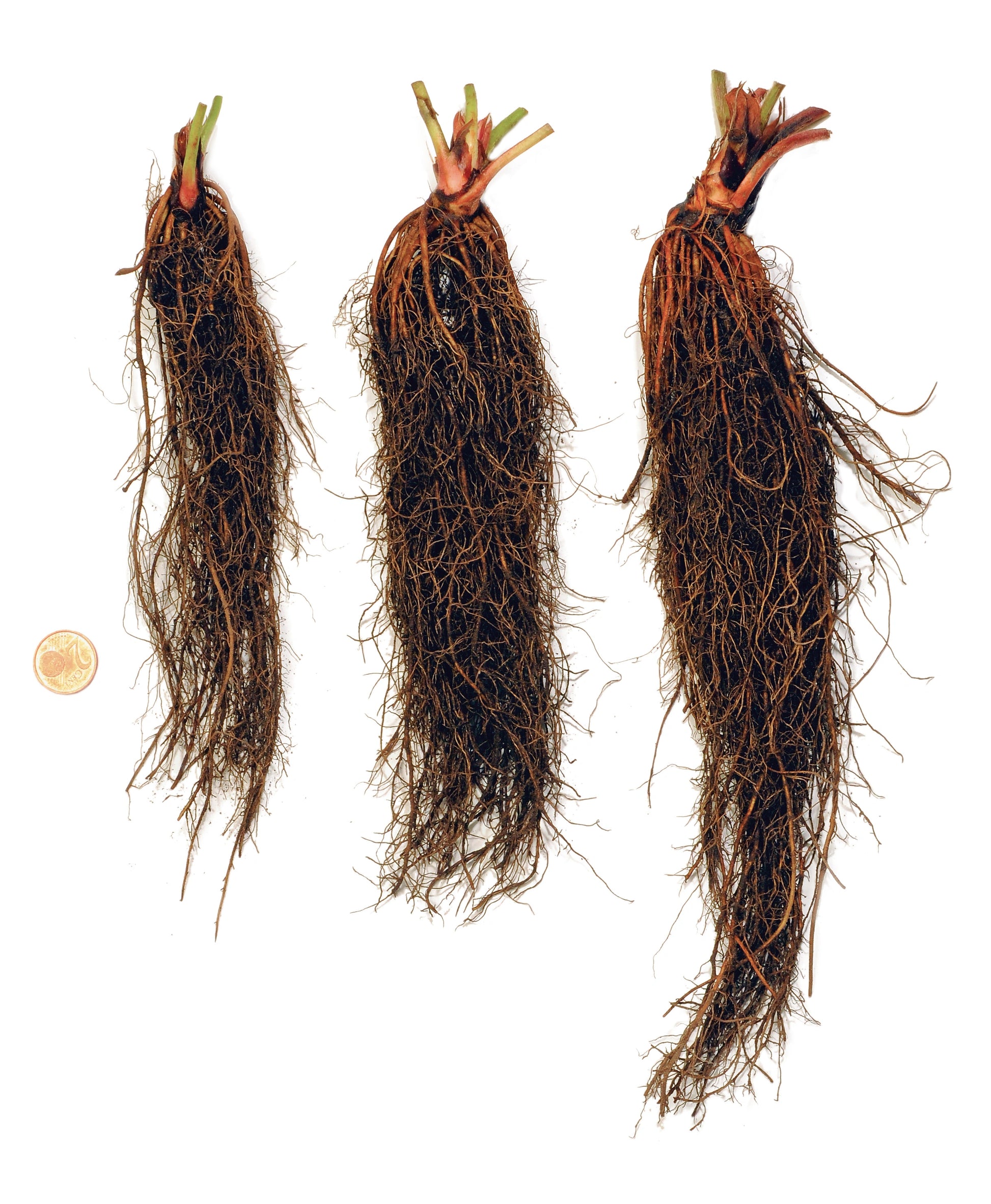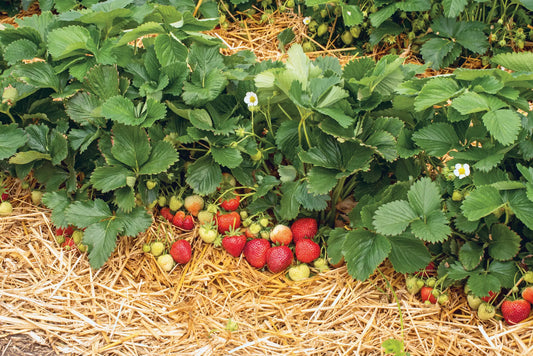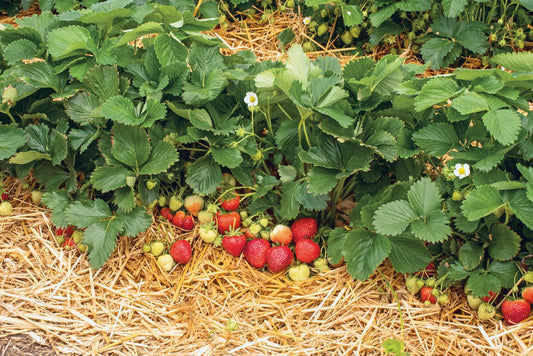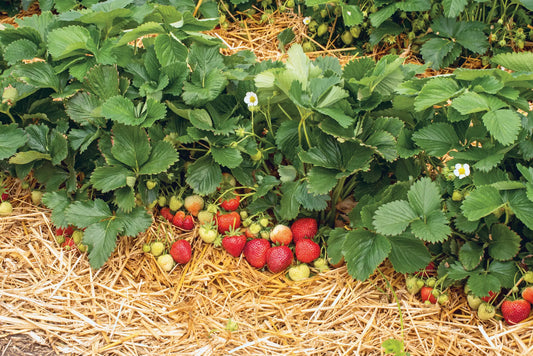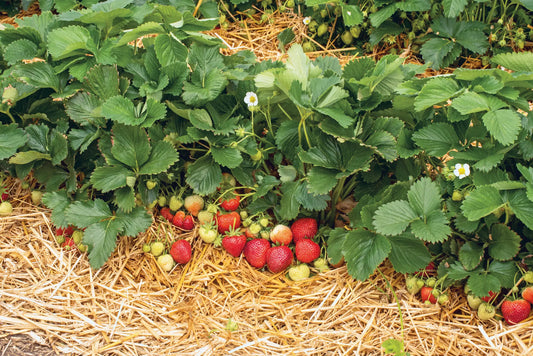-
Delivery from 10 plants to France, Switzerland and Europe
Delivery method -
Strawberry Plant Wholesale Supplier
About Us -
Quality Strawberry Plants
Strawberry Plant Technical Itinerary -
Secure payment
Our Payment Terms
Mount Everest Frigo A Strawberry Plant for Individuals
Mount Everest Frigo A Strawberry Plant for Individuals
Buy your strawberry plants at the best price - Price € excluding VAT per Strawberry Plant
Between September 15 and September 30 we deliver fresh plants. The rest of the year we deliver Frigo plants.
 Buy now and get it delivered when you're ready to plant
Buy now and get it delivered when you're ready to plant
- Delivery from 10 plants to France, Switzerland and Europe
Couldn't load pickup availability
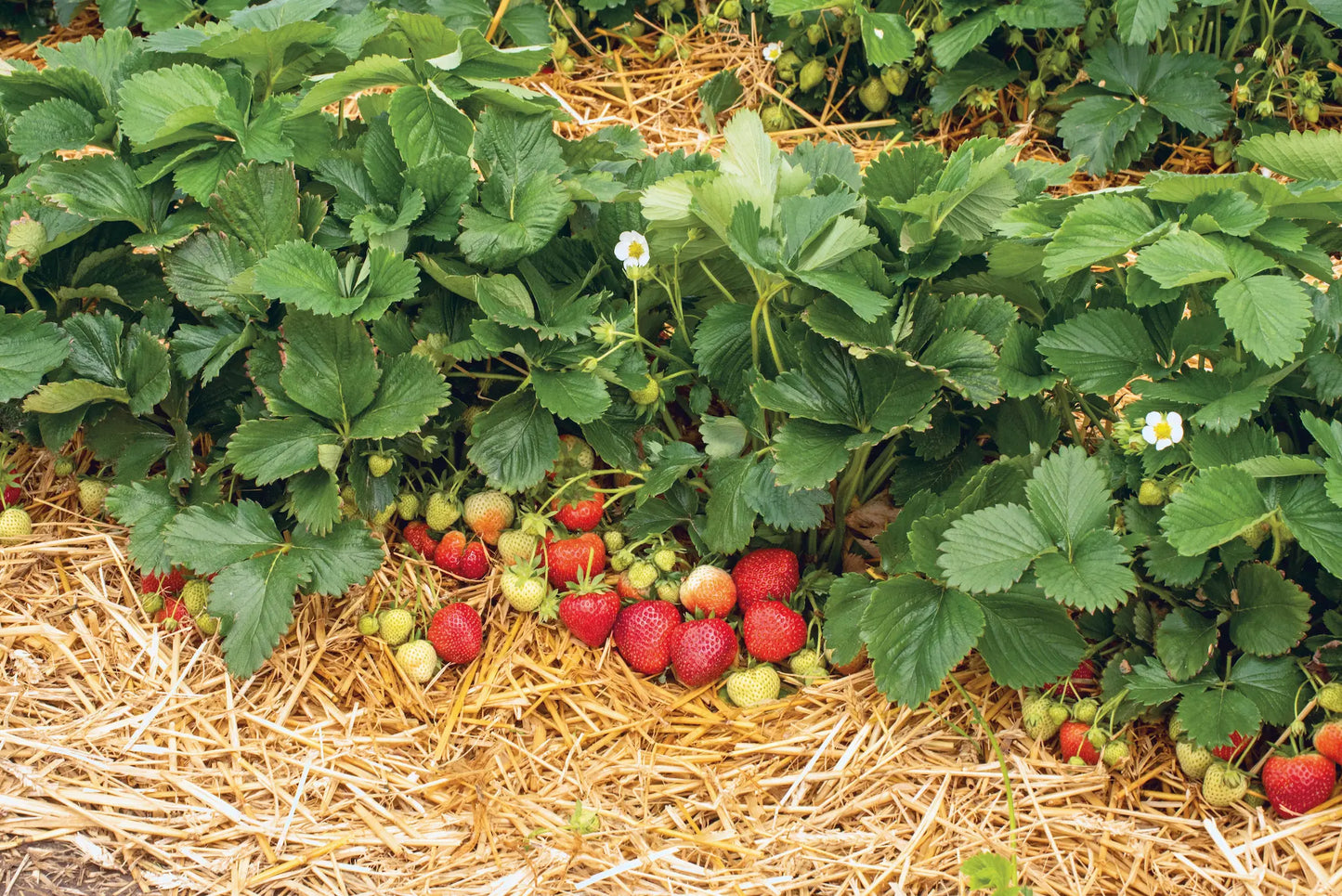
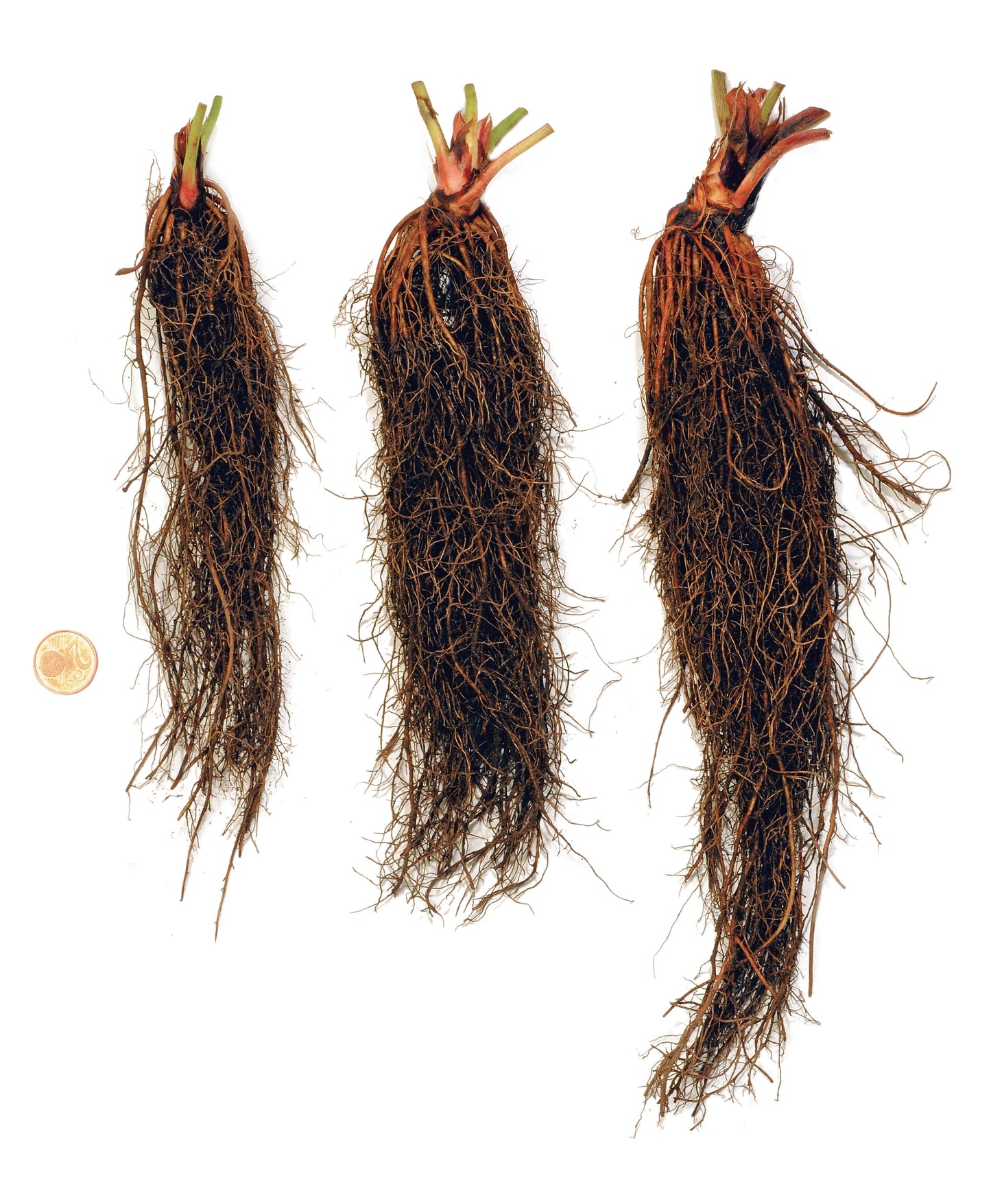
Collapsible content
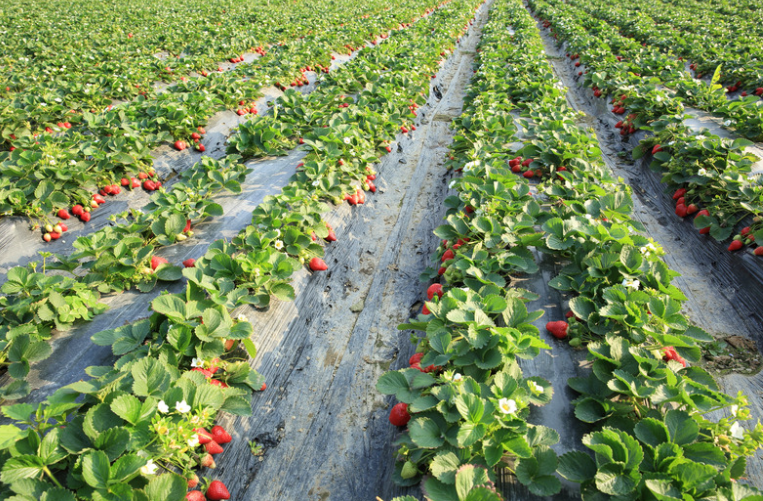
Strawberry Plant Buying Guide: What Type of Plants? For What Market Opportunity?
Which format should you choose: refrigerated, fresh, tray-plants, waiting bed, or plugs? Compare yields, costs, and harvest times at a glance.
Download the PDF guide (13 pages)
Why read this guide?
- Comparison tables: yield (300–600 g/plant), cost & labor.
- Reservation/delivery calendar for each format.
- Minimum order: 20 to 1,000 plants depending on the type.
- Full-field vs. above-ground case studies to maximize margin.
Overview of the 5 professional formats
Detailed comparison of formats
| Format | Yield (g/plant) |
Harvest time | Min. order | Average cost |
|---|---|---|---|---|
| Fridge | 250 – 400 | 120 days | 20 plants | 0.20 – 0.45 € |
| Costs | 280 – 420 | 140 days | 200 plants | 0.20 – 0.45 € |
| Tray plant | 400 – 600 | 90 days | 500 plants | 0.75 – 0.80 € |
| Waiting Bed | 300 – 500 | 105 days | 500 plants | 0.50 – 0.60 € |
| Motte | 230 – 350 | N+1 | 1,000 plants | 0.35 – 0.50 € |
Delivery schedule
| Plant type | Jan | Feb | Mar | Apr | May | Jul | Jul | Aug | Sep | Oct | Nov | Dec |
|---|---|---|---|---|---|---|---|---|---|---|---|---|
| Fridge | ||||||||||||
| Tray plants | ||||||||||||
| Waiting Bed | ||||||||||||
| Motte | ||||||||||||
| Costs |
Which format for which scenario?
Full field controlled budget
Fridge or Fresh : cost 2 x lower than tray plants, planting flexibility.
Above ground in greenhouse
Tray-plants : harvest 90 days after planting, uniform size, reduced labor.
Late planting
Mottes : planting July–August, rapid recovery, harvest the following year.
Ready to plan your plantings?
Download the complete guide Request a quoteFrequently Asked Questions
Is the guide free?
Yes, no fees or obligation to purchase.
How to download it?
Click the button “Download the guide” ; the PDF opens immediately.
Can I request a personalized quote?
Of course: write to us at contact@fraisiverse.com and an agronomist will respond to you within 24 hours.
Choosing the right strawberry varieties for your plot
Extend your harvest season by up to 5.5 months with our "early + season + everbearing" method. Compare 78 cultivars, sizes, and markets.
Download the PDF guide (17 pages)
4 axes to decide quickly
- Harvest Window : Early, Seasonal, or Everbearing? Combine them for 5.5 months .
- Commercial outlet : direct sales, long circuit, processing or freezing.
- Type of plants : fridge, fresh, root ball, tray plants… adapt your investments and your schedule.
- Growing conditions : open field, soilless, greenhouse; target consistent yield and size.
Axis 1: Select your harvest window
Example of recommended mix:
- Ciflorette (early) → Rubis des Jardins (season) → Charlotte (remontant).
- 5.5 months of continuous production, ideal for direct sales.
Axis 2: Sell at the right market
Direct sales
Ciflorette, Charlotte, Mara des Bois: premium taste sought after by consumers.
Long circuit / GMS
Magnum, Clery, Dream: uniform size, 95% class 1 fruit.
Transformation
Darselect, Mara des Bois – high sugar content and stable aroma.
Freezing
Honeoye, Belrubi – firm flesh, keeps well in the cold.
Axis 3: Choose the right type of plants
| Kind | Reservation | Delivery | Highlights |
|---|---|---|---|
| Fridge | All year round | Dec. → Aug. | Flexibility & price |
| Tray plants | Feb. → June | Nov. → Apr. | Above ground, harvest 90 days after planting |
| Motte | Sep. → May | Jul. → Sep. | Ideal for open fields, harvest N+1 |
| Costs | Feb. → Aug. | Sep. → Nov. | Young plants, rapid recovery |
Axis 4: Optimize your technical constraints
Tray plants guarantee +25% yield and simplified harvesting above ground; ideal for mechanizing your production and ensuring consistent size.
Frequently Asked Questions
Is the guide really free?
Yes, with no cost or obligation to purchase.
How to download it?
Just click the button “Download the guide” at the top of the page; the PDF opens immediately.
Can I request a personalized quote?
Of course: contact us via our contact page .
When to plant? When to harvest?
Do you want to start a strawberry farm but don't know when to reserve your plants, when to plant them or even harvest them?
Because we love 🍓 (with just a little sugar), we're going to do the work for you. On this page, you'll find the growing steps for each type of strawberry plant. When to order? What is the delivery period? When to plant? And finally, when to harvest?
Production Calendar - Frigo Strawberry Plants
| Production Calendar - Frigo Strawberry Plants | ||||||||||||||||||||||||
|---|---|---|---|---|---|---|---|---|---|---|---|---|---|---|---|---|---|---|---|---|---|---|---|---|
| Jan | Feb | Mar | Apr | May | Jun | Jul | Aug | Sep | Oct | Nov | Dec | |||||||||||||
| Reservation | ||||||||||||||||||||||||
| Deliverable | ||||||||||||||||||||||||
| Recommended planting | ||||||||||||||||||||||||
| Harvest | ||||||||||||||||||||||||
Production Calendar - Fresh Bare-Root Strawberry Plants
| Production Calendar - Bare Root Strawberry Plants | ||||||||||||||||||||||||
|---|---|---|---|---|---|---|---|---|---|---|---|---|---|---|---|---|---|---|---|---|---|---|---|---|
| Jan | Feb | Mar | Apr | May | Jun | Jul | Aug | Sep | Oct | Nov | Dec | |||||||||||||
| Reservation | ||||||||||||||||||||||||
| Deliverable | ||||||||||||||||||||||||
| Recommended planting | ||||||||||||||||||||||||
| Harvest | ||||||||||||||||||||||||
Production Calendar - Strawberry Plants Plugs
| Production Calendar - Strawberry Plants Motte | ||||||||||||||||||||||||
|---|---|---|---|---|---|---|---|---|---|---|---|---|---|---|---|---|---|---|---|---|---|---|---|---|
| Jan | Feb | Mar | Apr | May | Jun | Jul | Aug | Sep | Oct | Nov | Dec | |||||||||||||
| Reservation | ||||||||||||||||||||||||
| Deliverable | ||||||||||||||||||||||||
| Recommended planting | ||||||||||||||||||||||||
| Harvest | ||||||||||||||||||||||||
Production Calendar - Strawberry Plant Tray
| Production Calendar - Strawberry Plants Motte | ||||||||||||||||||||||||
|---|---|---|---|---|---|---|---|---|---|---|---|---|---|---|---|---|---|---|---|---|---|---|---|---|
| Jan | Feb | Mar | Apr | May | Jun | Jul | Aug | Sep | Oct | Nov | Dec | |||||||||||||
| Reservation | ||||||||||||||||||||||||
| Deliverable | ||||||||||||||||||||||||
| Recommended planting | ||||||||||||||||||||||||
| Harvest | ||||||||||||||||||||||||
Our Growing Guides by Plant Type / Our Growing Tips
Our online advisor: Fraisibot
Our technical itineraries by type of strawberry plant:
Technical Itinerary for Growing Strawberries from Frigo Plants
Technical Itinerary for Growing Strawberries from Plug/Pod Plants
Technical Instructions for Growing Strawberries from Tray or Mini Tray Plants
Technical Guide for Growing Strawberries from Bare-Root Fresh Strawberry Plants
Technical Instructions for Growing Strawberries from Waiting Bed Plants
All our growing tips for planting strawberries:
Strawberry Plants: Soil Preparation and Planting
Soil preparation for strawberry growing, planting techniques, and optimizing strawberry yield.
Best Practices for Irrigation and Fertilization of Strawberry Plants
Efficient irrigation systems, frequency and quantity of watering, types of fertilizers and application times, signs of nutritional deficiencies, growing strawberries in substrate, protection against frost and diseases.
Protection and Prevention of Strawberry Diseases and Pests
The main diseases and pests affecting strawberries, as well as effective methods for their prevention and treatment, including biological control and the use of resistant varieties. It provides practical advice for maintaining healthy and productive strawberry crops.
Succeeding in Strawberry Farming: Costs, Business Strategy and Subsidies
Growing strawberries requires significant initial and ongoing costs, but with effective marketing strategies and sustainable practices, growers can maximize their profits while contributing positively to the environment. Grants and financial aid are available to support necessary investments and encourage environmentally friendly farming practices.
Maximizing Strawberry Harvest and Storage: A Practical Guide
How to determine the optimal time to harvest strawberries, best practices for minimizing fruit damage during picking, and effective methods for storing and managing unsold strawberries to avoid losses and maximize profitability. It offers practical tips for extending the shelf life of strawberries, including refrigeration, freezing, and dehydration.
Strawberry Growing: Why Stagger Production? Early, Seasonal, Late? How to Choose?
Staggering strawberry production allows for harvests to be spread throughout the season, ensuring optimal fruit quality and increased profitability. Learn about recommended varieties for early, mid-season, and late-season production, as well as best practices for harvesting and storage.
Mount Everest Strawberry Variety Fact Sheet
- Remontant: Remontante
- Earliness: Remontante
- Harvest period: From June to October, with continuous production over a long period
- Fruit color: Dark red
- Taste characteristics: Very tasty, sweet and juicy fruits
- Fruit Size: Large to medium sized fruits
- Disease Resistance: Normal
- Yield, management and marketing: between 700 and 900 g per plant per year
Order your professional strawberry plants
Fraisiverse, a specialist wholesale supplier of strawberry plants , offers you the Mount Everest variety, renowned for its productivity and hardiness. Buying your strawberry plants guarantees you a supply of professional-quality plants from specialized nurseries. Benefit from high yields, good frost tolerance, and adaptation to the various French climates. Our plants are carefully selected to offer an attractive commercial presentation and a long production period. We provide dedicated technical support and personalized advice to optimize your results. Fast and careful delivery throughout France, with producer prices and decreasing conditions according to volumes. Order now , reserve now , and take advantage of our producer prices . Request your free quote today to benefit from a responsive sales service and immediate availability on this professional variety.
Varietal characteristics and agronomic performance
Botanical profile and varietal description
The Mount Everest Strawberry, under its botanical name Fragaria × ananassa 'Mount Everest' , is a climbing and everbearing variety, a valuable characteristic that allows it to produce fruit continuously throughout the season. Its foliage is deciduous, fading naturally in winter for better hardiness. The commercially ripe fruits have a dark to intense red hue, offering a visually attractive presentation on the stalls. While the specific internal color is not always detailed, it is generally revealed to be light red to uniform red, as is the case with the juicy strawberries of this typology.
Biometric parameters and organoleptic quality
Rounded in shape, sometimes compared to large wild strawberries, the berries are distinguished by their medium to large size, generally ranging between 10 and 15 grams , and can reach 7 grams or be in a wider range of 15 to 25 grams depending on the harvest. The surface of the fruit is shiny and firm, guaranteeing a regular appearance that is much appreciated. The texture in the mouth is characterized by its crunchy and juicy side, a very pleasant combination for the consumer, without precise numerical penetrometry data being directly available for this variety. In terms of taste, Mount Everest is fragrant, very pleasant, sweet and juicy , with an excellent balance between sugar and acidity. Its aroma is similar to that of wild strawberries, and although the exact Brix degree is not published, it is estimated between 8 and 10% , a level comparable to quality everbearing varieties.
Technical management and planting strategy
Planting calendar by geographic area
To maximize the potential of the Mount Everest Strawberry, special attention must be paid to its cultivation route. The optimal planting period in France varies depending on the climate zones. In the temperate climates of the North, Center and East, an autumn planting, ideally from mid-September to the end of October , is recommended to promote robust rooting before winter and early production the following spring. For the Mediterranean climates of the South and the Atlantic coast, a later autumn planting (October to November) or late winter/early spring (February to March) can be considered. Finally, in mountainous regions or those with very harsh winters, a spring planting (March-April) is often preferable.
Planting density and plot layout
Regarding spacing, it is recommended to plant Mount Everest strawberries 20 to 25 cm apart in the row, with 35 to 40 cm between rows . This planting density can reach approximately 142,850 plants per hectare in very intensive systems, although common professional practices for intensive everbearing varieties are more in the range of 40,000 to 50,000 plants per hectare .
Pedoclimatic requirements and substrates
The choice of soil or substrate is crucial. The Mount Everest Strawberry thrives in loose, well-drained soil, ideally with a siliceous-clayey, sandy-loamy or sandy loam texture . It requires a soil rich in organic matter, with an addition of 2 to 4 kg/m² of compost or well-rotted manure before planting. The optimal pH is between 6.0 and 7.0 , with a preference for 6.5 to 7.0. The salinity of the substrate must be monitored, with a maximum tolerated electrical conductivity (EC) of 2 mS/cm , and ideally around 1 to 1.5 mS/cm during the vegetative phase. In case of unsuitable soil, growing in trays, pots or soilless supports is an excellent alternative.
Full sun exposure is essential for optimal fruiting, requiring at least 6 hours of direct sunlight per day . In warm regions, partial shade exposure is recommended to avoid water stress. Ideal temperatures for growth and fruiting are between 18 and 22°C during the day and 12 to 15°C at night , with frost resistance down to -16°C, or even -20°C under certain conditions. Atmospheric humidity should be maintained between 60 and 75%.
Nutritional program and cultural monitoring
Irrigation management and cultivation techniques
Cultivation management involves regular and intermittent watering , especially during flowering and fruiting. The use of mulch is strongly recommended to conserve moisture, limit weeds and protect the fruit. For better productivity, it is essential to cut the first flower stems during the month following planting to encourage rooting and plant development. Regular removal of unnecessary runners allows the vigor to be concentrated on fruiting.
Fertilization plan adapted to repeat-flowering plants
An indicative fertilization plan for this everbearing variety, requiring a constant nutrient supply, is between 80 and 100 units/ha/year of nitrogen, 60 to 80 units/ha/year of phosphorus, and 150 to 180 units/ha/year of potash , with split applications and particular attention to trace elements such as magnesium, boron and calcium.
Expected yield and harvest window
Production start-up and forecast yields
The Mount Everest Strawberry is distinguished by its rapid production . The first marketable harvest can occur 2 to 4 months after spring planting (as early as June/July), or 8 to 10 months after autumn planting , as early as June of the following year.
The average expected yield for this variety is between 700 and 900 grams per plant per year under standard growing conditions. With advanced techniques such as plasticulture and trellising, it is even possible to achieve up to 1.8 kg per plant . On a per hectare scale, considering a professional planting density of 40,000 to 50,000 plants/ha, this represents a potential yield of 28 to 45 tonnes per hectare , or even more than 27 tonnes per hectare with optimized techniques.
Production spread and harvest peaks
As a repeat-bearing variety, Mount Everest offers a particularly long and continuous harvest window, generally extending from June until the first frost , often until October. Production is not concentrated in a short period but spreads out in waves. The main harvest peak, when 60 to 70% of the annual production is achieved, is generally from mid-June to mid-August . This spread-out production constitutes a major logistical advantage for professionals seeking a stable supply over a long season.
Phytosanitary protection and pest management
Varietal resistance and sensitivities identified
The Mount Everest variety has a disease resistance described as "normal" , without offering specific tolerance or notable genetic resistance to certain major pathologies. It is crucial to note that no commercial strawberry variety is currently recognized as resistant to Xanthomonas fragariae (angular leaf spot), and Mount Everest is no exception to this rule. Management of this disease therefore relies on rigorous prophylactic measures, such as the use of healthy plants and the avoidance of overhead irrigation.
Integrated pest management strategies
Regarding common strawberry pests, such as thrips, aphids, spider mites, weevils (Anthonomus rubi) and Drosophila suzukii, Mount Everest shows resistance considered normal or weak , with no particular tolerance documented. The variety is susceptible to Drosophila suzukii , a pest whose management depends mainly on cultural practices such as the installation of nets, rapid harvesting of ripe fruit and removal of damaged fruit. For spider mites and aphids, which are very widespread in strawberry crops, the absence of specific resistance requires integrated control, including the preventive introduction of natural auxiliaries ( predatory mites such as Neoseiulus californicus and Phytoseiulus persimilis for spider mites, and ladybugs for aphids). It is also recommended to avoid overly dense plantings to promote good aeration and reduce disease and pest pressure. Careful monitoring and targeted interventions as soon as the first outbreaks appear are essential to prevent any explosion of the parasite population.
Economic analysis and field feedback
Commercial positioning and post-harvest performance
The Mount Everest Strawberry is proving to be one of the most profitable varieties for professionals , mainly intended for fresh consumption. Its commercial positioning is oriented towards direct sales, but it is also perfectly suited to long supply chains thanks to the excellent shelf life of its fruits. This post-harvest storage capacity is a major asset, allowing firmness to be maintained and wilting to be limited for 6 to 8 days in a cold room at 0-2°C and a relative humidity of at least 90%. This storage performance greatly facilitates logistics, from packaging to transport, reducing losses and increasing the commercial value of the product.
Commercial quality and waste management
Fruit quality is a key factor in profitability. Mount Everest is distinguished by a very high percentage of first-category (Class I) fruit, generally above 85% during packaging, which minimizes the waste rate (around 10 to 15%). Size uniformity at peak production is also very good, ensuring homogeneous and attractive batches for the market. The optimal productive lifespan of a Mount Everest plantation is 2 to 3 years in professional cultivation before seeing a decline in quality and yield, which requires regular plant renewal to maintain optimal production and control health risks. This renewal cycle is standard practice for everbearing strawberries in intensive production.
Producer Assessments and Adaptability
Producers who have opted for the Mount Everest Strawberry unanimously emphasize its general hardiness, its ability to adapt to temperate climates and to resist frost , essential qualities for the sustainability of crops in France. The flavor of the fruit is frequently praised , pleasantly similar to wild strawberries, a powerful selling point for markets demanding in terms of taste quality. Its good post-harvest performance is also a strong point appreciated for the logistical management of long circuits, allowing marketing with great serenity. Finally, its climbing nature offers interesting flexibility to optimize the growing space , making the Mount Everest variety suitable for growing in pots, hanging baskets or trellised, a diversification that can appeal to market gardeners wishing to enhance their surfaces vertically.
To summarize: Our Mount Everest strawberry plants
At Fraisiverse , we provide you with Mount Everest strawberry plants selected for their agronomic performance and taste quality. As a specialist wholesale supplier of strawberry plants , we guarantee a reliable and constant supply. This climbing and everbearing variety produces intense red fruits with a sweet and fragrant taste, with an average yield of 700 to 900 g per plant, and up to 1.8 kg in optimized conditions. Thanks to its hardiness, the Mount Everest can withstand temperatures down to -16°C, or even -20°C, and adapts to temperate, Mediterranean or mountain climates. You can buy Mount Everest strawberry plants to benefit from a long harvest window, from June to the first frosts, ensuring a regular supply for your customers. Our plants come from specialized nurseries and are prepared with optimal care to preserve their vigor. As a specialist wholesale supplier of strawberry plants , we offer personalized support, tailored technical advice, and professional packaging. Buying Mount Everest strawberry plants from us also means benefiting from producer prices, fast delivery, and consistent quality. The proportion of top-quality fruit often exceeds 85%, limiting losses and increasing profitability. As a specialist wholesale supplier of strawberry plants , we ensure that every order meets your requirements. Buying Mount Everest strawberry plants from Fraisiverse means investing in a versatile, resilient, and commercially successful variety.
-
Mount Everest Frigo A Strawberry Plant - Buy Now Online for Professionals
Regular price €0,44 EURRegular priceUnit price / per -
Mount Everest Frigo A Strawberry Plant for Individuals
Regular price €0,65 EURRegular priceUnit price / per -
Mount Everest Frigo A+ Strawberry Plant - Buy Now Online for Professionals
Regular price €0,51 EURRegular priceUnit price / per -
Mount Everest Frigo A+ Strawberry Plant
Regular price €0,29 EURRegular priceUnit price / per


